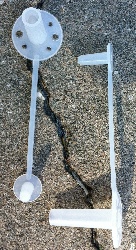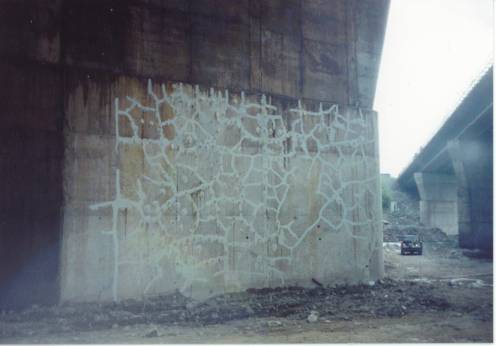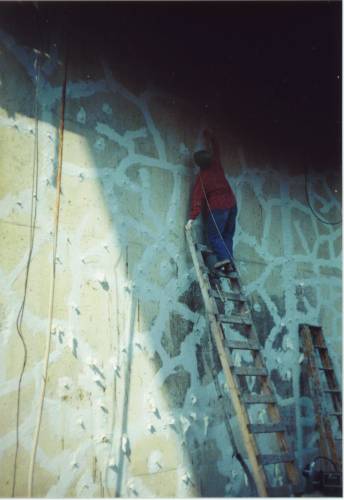Here is an outline of the procedure for patching with Epoxy.com Product #1 and Product #10. Cold cure is identical but you should make even smaller batches and work even faster.
- Mix a small amount of the #10 (mix ratio 2A: 1B).
- Measure accurately and mix for 3 minutes with a proper size mixer.
- Typically very small batches less than a quart can be mixed with a stir stick.
- Larger batches should use a mixing paddle in a low speed drill or similar. Typically mixing paddles are 5 inches or more in diameter.
- Apply a primer coat of #10 at a rate of 250-300 SF per gallon (typically done with a roller) to the substrate the mortar is to be attached to.
- Typically you will allow this to harden to the touch to make troweling into it easy.
- You can trowel into the wet primer in the case of small patches.
- Mortar Patch
- Mix another small batch of #10, using the methods in step 1 above.
- Add Product #82 Mortar Blend Aggregate to the mixed resin in 3a. You can add as much as 50 to 75 lbs. of mortar blend aggregate to a gallon of mixed #10 resin. If the material appears to wet you can add more, if it is too dry add less.
- Quickly trowel the patch into place. Winter Cure Epoxy can set very fast in the bucket.
- Sealer Coat
- After the patch in step 3 has hardened, you can grind off any high spots and fill more material again if needed.
- Then seal the top of the patch.
- Product #10 is thinner than the #1, making it an excellent sealer for sealing up the patch.
- Alternately you can go directly to a very thin coat of #1
- Top Coat
- Mix small batches of #1 using the methods used in #1 above.
- Mix optional Antiskid fine into the coating above at a rate of 8-16 volume ounces of Anti-skid per gallon of mixed resin. 12 ounces per gallon is typical. This is done by mixing the resin first, adding the anti-skid and mixing for another min.
- Quickly apply the material with a roller at a rate of 160-200 SF per gallon per coat. Two coats is recommended.
- Please read all the information below before starting your project.
- Do with Epoxies
- Don’ts with Epoxies
- Surface Preparation
- www.epoxy.com/10.aspx
- http://epoxy.com/1cold.htm
- SDS Product #10 Part A – Hardener Lo-Mod Epoxy Adhesive and Mortar Epoxy Resin
- SDS Product #10 Part Cold Cure B – Lo-Mod Epoxy Adhesive and Mortar Epoxy Hardener
- SDS Product #1A – All Purpose Coating Hardener Component MSDS.
- SDS Product #1B -cc – Cold Cure Epoxy Hardener for Product #1
BE SURE TO CALL ME WITH ANY QUESTIONS OR CONCERNS!



 Posted by Norm Lambert
Posted by Norm Lambert 
 Often inadequate design for expansion/contraction is the cause for parking garage structural cracking. Avoid weld injecting a crack if there are not enough expansion joints. Sometimes flexible overlays such as
Often inadequate design for expansion/contraction is the cause for parking garage structural cracking. Avoid weld injecting a crack if there are not enough expansion joints. Sometimes flexible overlays such as  Structural restoration of concrete by epoxy injection is very often the only alternative to complete replacement. It therefore results in large cost savings. Injection protects the rebar and stops water leakage.
Structural restoration of concrete by epoxy injection is very often the only alternative to complete replacement. It therefore results in large cost savings. Injection protects the rebar and stops water leakage. ral value. Loosing the entire structure is often the result.
ral value. Loosing the entire structure is often the result.